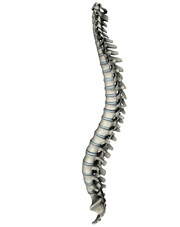
One of the largest studies ever performed addressing subchondral bone marrow lesions, or “Modic changes” of the spine visible on magnetic resonance imaging (MRI), has found a clear association between the lesions and disc degeneration, as well as both the presence and severity of low back pain.
A study published in The Spine Journal has investigated the link between Modic changes and lower back pain. Noting controversial results from small-scale patient cohorts in prior studies of Modic changes and back pain, the research team performed a large-scale, cross-sectional, population-based study of Southern Chinese volunteers (n=2449) based on the Hong Kong Disc Degeneration Cohort Study.
The researchers obtained MRIs on all subjects to assess the presence of Modic changes as well as other spinal phenotypes, such as disc degeneration and displacement (e.g. buldge, herniation), and endplate abnormalities (e.g. Schmorl’s nodes). Researchers observed Modic changes in 5.8% of patients, whereby the prevalence was associated with increasing age, and most commonly noted at the lower segments of the lumbar spine (83% at L4-S1).
Following complex statistical analyses, the team found different determinants to be associated with the occurrence of Modic changes at the upper and lower regions of the lumbar spine. Changes at the upper levels were only linked to disc degeneration and displacement. Changes at the lower segments of the lumbar spine, however, were linked to age, Schmorl’s nodes, disc degeneration and historical lumbar injury. Lower spinal Modic changes were more likely to occur in smokers who were also overweight. Most importantly, those participants who had reported historic low back pain were more likely to present with Modic changes in the lower lumbar spine than those who had not. The time of onset of historical low back pain, and the severity of its presentation, were also associated with these changes (p<05).
The authors conclude that the “results of the current study highlight the importance of Modic changes and their relation with pain as well as the variation of determinants associated with Modic change that may be level-specific.” Findings from this study further stress the importance of Modic changes as a significant phenotype related to lower back pain and an extremely important imaging biomarker of pain.
The results of the study are limited by their cross-sectional nature, which The Spine Journal’s editors note, “can only really represent information gleaned from a single moment in time”. Furthermore, the findings may not be applicable to populations outside of Southern China. However, due to the homogeneity of the population, this minimises potential confounding variables that may be noted in mixed populations. The authors suggest that future research could “further delineate the sub-phenotyping of Modic changes in relation to pain profiles.”













